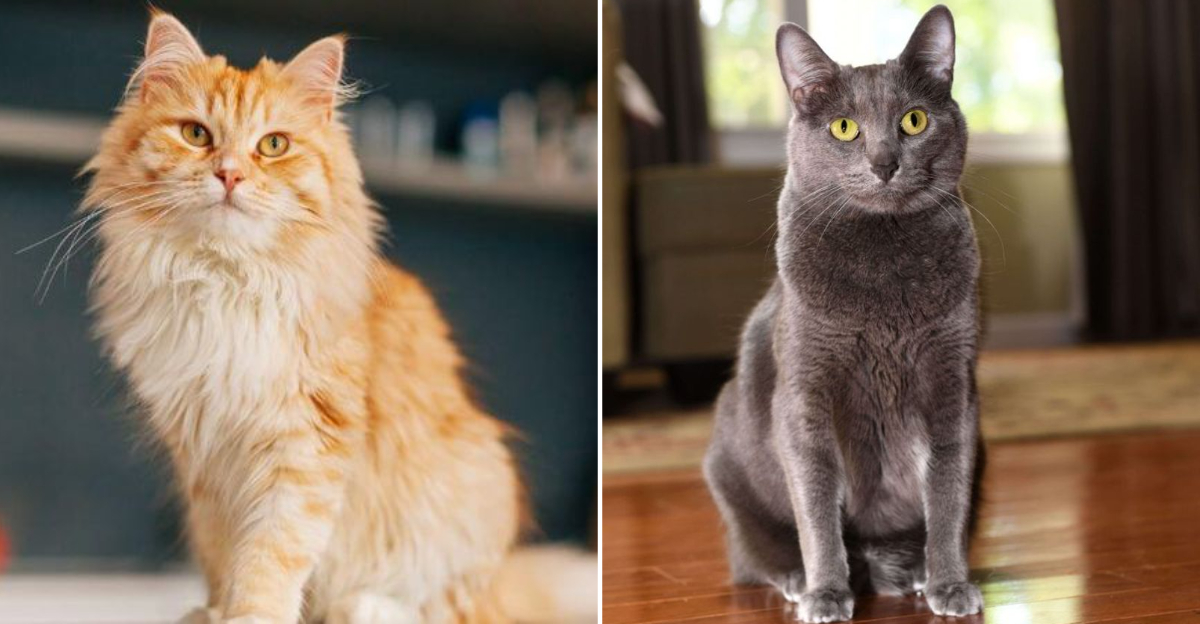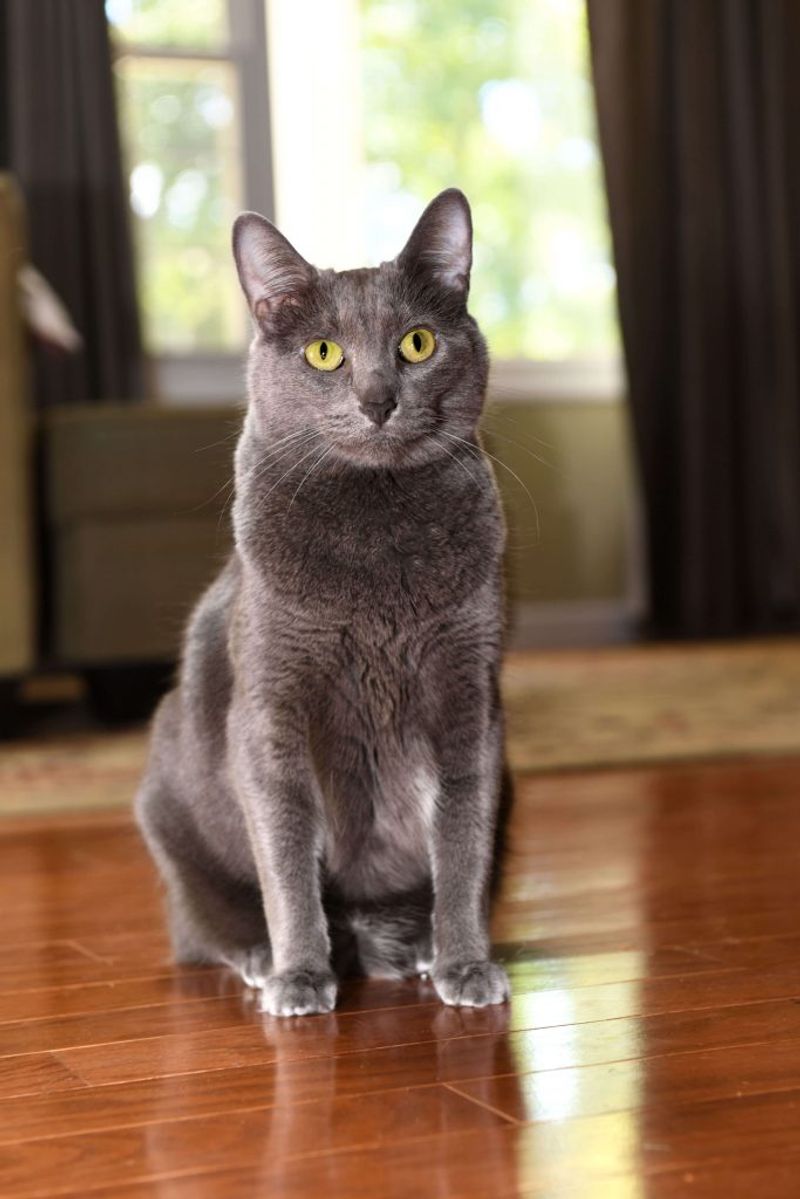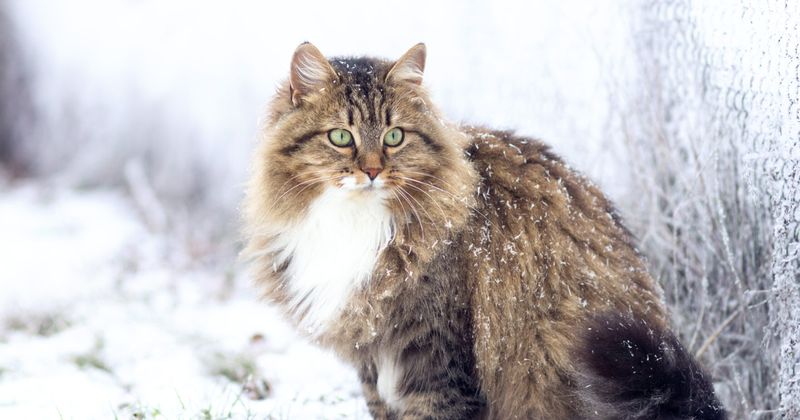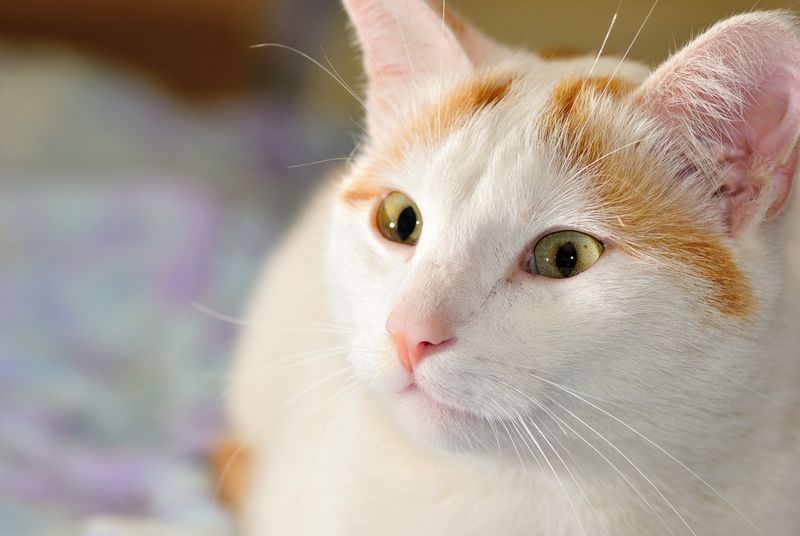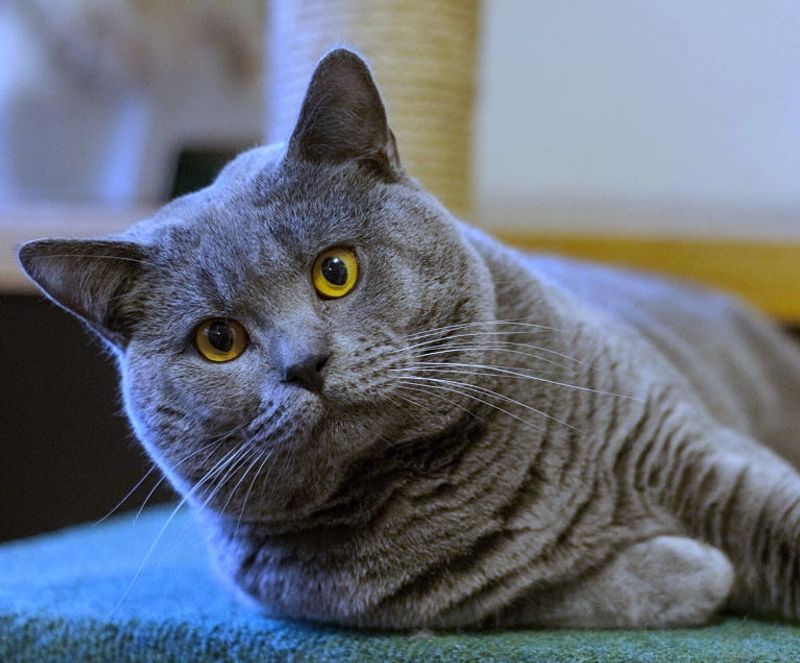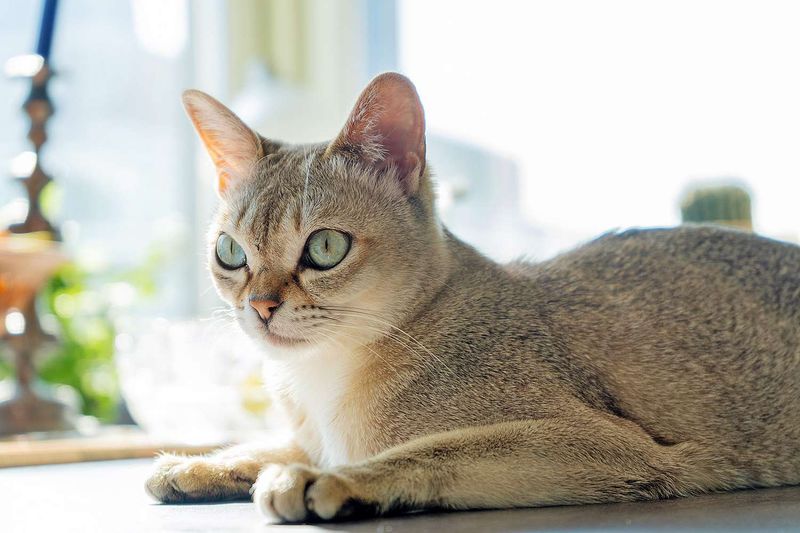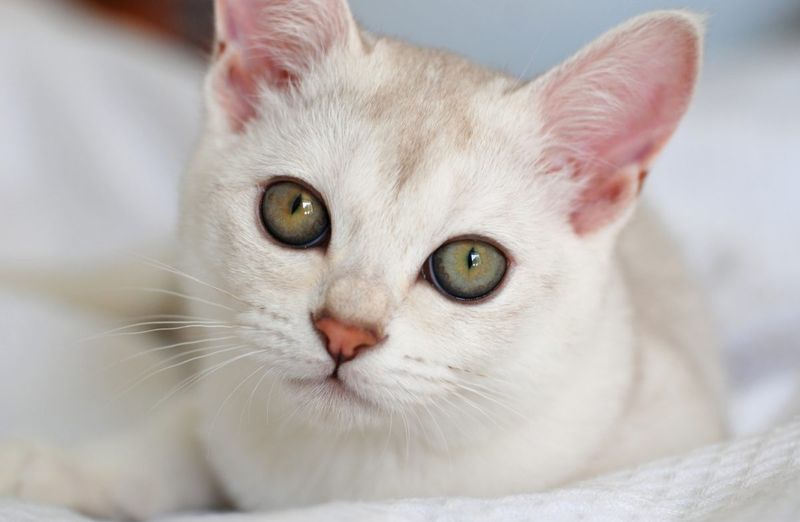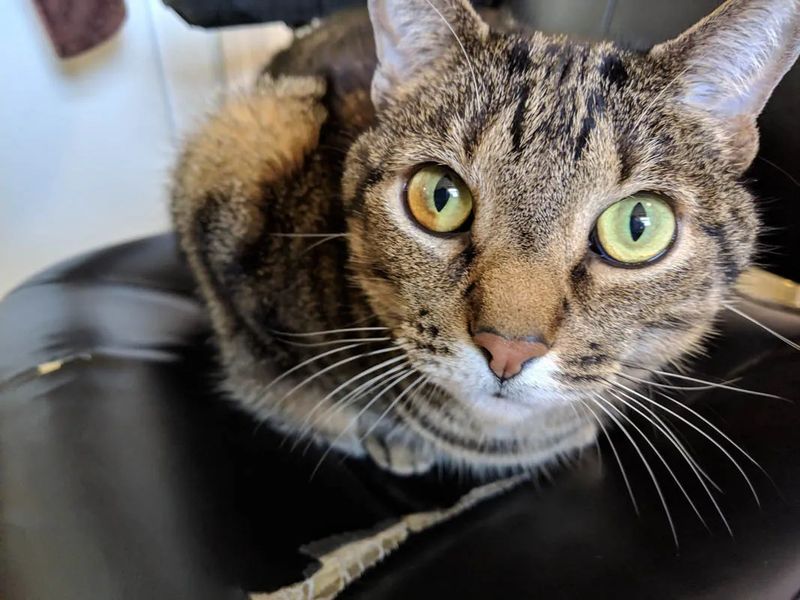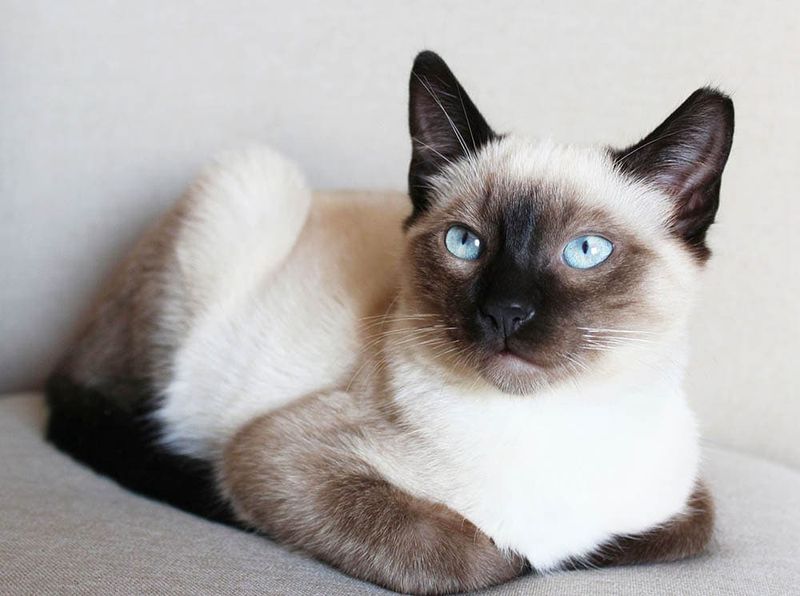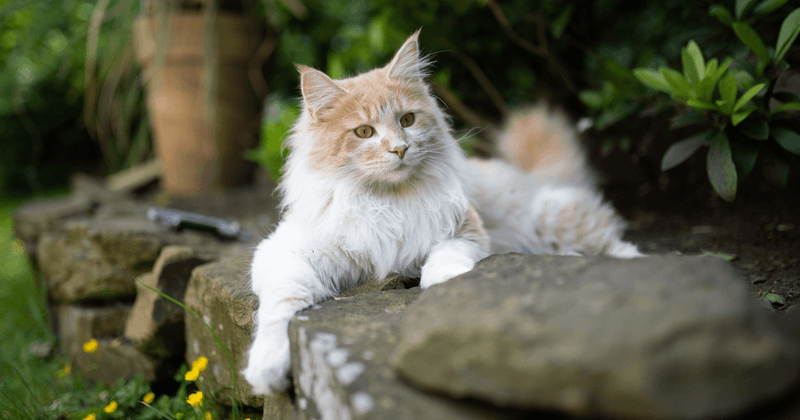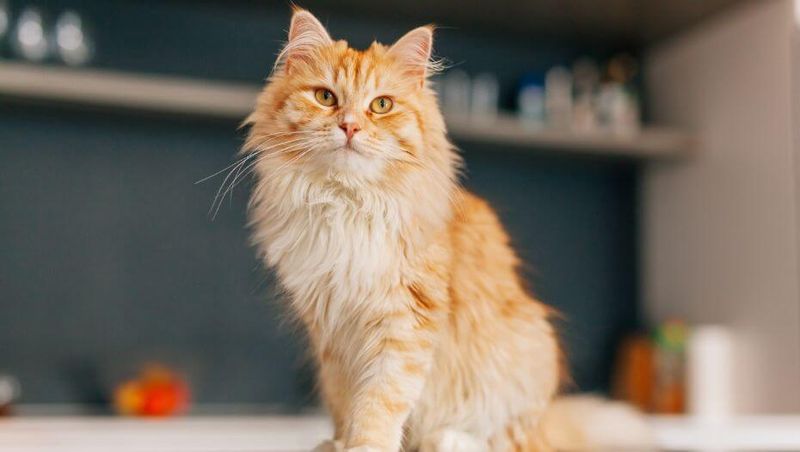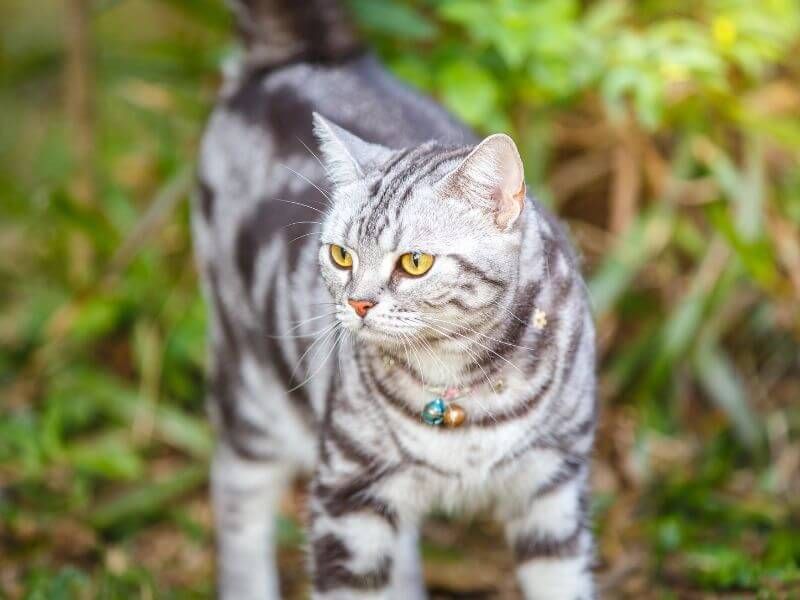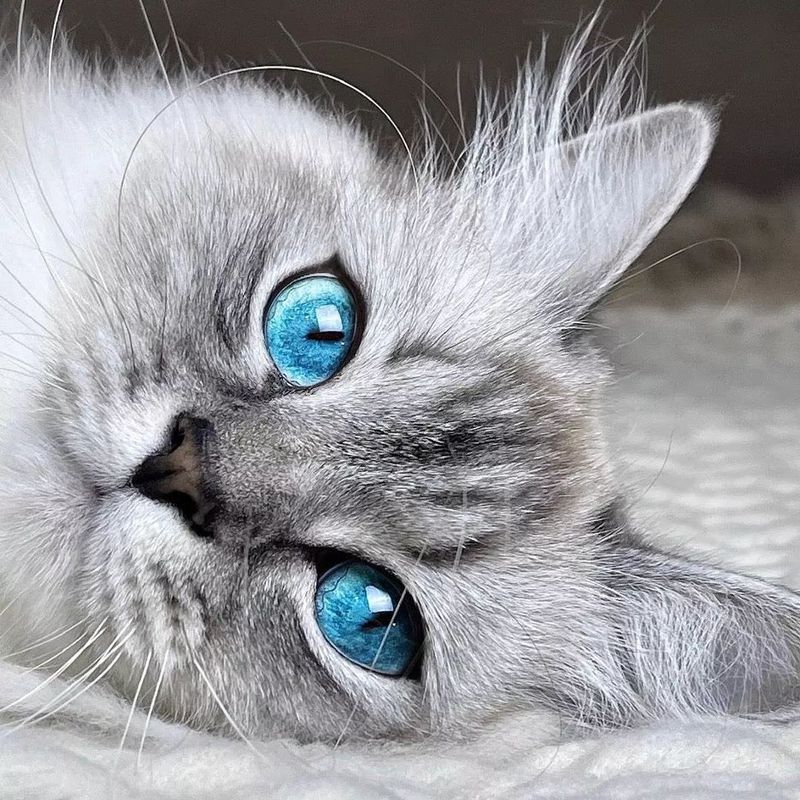📖 Table of Content:
Cat lovers across America have their favorites when it comes to feline companions. While some breeds have become household names, others remain mysterious rarities that few Americans have encountered in person. From exotic imports to traditional favorites, the world of cat breeds offers something for everyone. Let’s explore some uncommon feline friends you might not have met yet, along with the tried-and-true classics that have captured American hearts for generations.
1. Korat
Hailing from Thailand, Korats are considered symbols of good fortune in their homeland. These silver-blue beauties have heart-shaped faces and luminous green eyes that develop fully after 2-4 years. Korats form intense bonds with their families but remain relatively uncommon in American homes.
Their rarity stems partly from dedicated breeders who carefully maintain the purity of this ancient lineage. Despite their aristocratic appearance, these cats are playful and intelligent companions who enjoy interactive games and puzzles. They typically live 15+ years and maintain their playful spirit well into their senior years.
2. Norwegian Forest Cat
Built for harsh Scandinavian winters, Norwegian Forest Cats boast thick double coats and tufted ears that would make any Viking proud. Their muscular bodies and bushy tails help them navigate snowy landscapes with ease.
These gentle giants grow slowly, taking up to five years to reach full maturity. While popular in Europe, they remain relatively scarce in American homes despite their friendly, low-maintenance personalities. Natural athletes, they excel at climbing and jumping to impressive heights. Their history dates back centuries, with some believing these cats accompanied Vikings on sea voyages as skilled mousers.
3. Turkish Van
Famous for their love of water, Turkish Vans have earned the nickname “swimming cats.” Their water-resistant coats and powerful bodies make them natural swimmers, unlike most felines who avoid getting wet.
The distinctive colored head and tail against a pure white body create their signature “van” pattern. These cats develop slowly, reaching full size around 3-5 years of age. Turkish Vans remain rare in the U.S. despite being one of the oldest natural cat breeds. Energetic and intelligent, they form strong bonds with their families while maintaining an independent streak that reflects their ancient heritage.
4. Chartreux
French elegance personified, the Chartreux sports a distinctive blue-gray coat and copper-gold eyes. Their most charming feature might be their perpetual smile, created by their unique head and muzzle shape. Silent observers, these cats communicate primarily through expressive eyes and soft chirps rather than meows.
The breed nearly disappeared during World War II and remains uncommon outside France. Chartreux cats combine playfulness with a calm demeanor that makes them excellent apartment dwellers. Their history includes tales of monks breeding them in French monasteries, though modern historians debate this romantic origin story.
5. Singapura
Among the world’s smallest cat breeds, adult Singapuras typically weigh just 4-8 pounds. Their enormous eyes and ears create an adorably disproportionate appearance that cat enthusiasts find irresistible.
Originally from Singapore’s streets, these cats feature distinctive ticked coats in warm sepia tones. Despite their diminutive size, Singapuras possess boundless energy and curiosity that keeps households entertained. Their rarity in American homes stems partly from small litter sizes and limited breeding programs. Those lucky enough to share their homes with these “little lions of Singapore” describe them as affectionate shadows who follow their people from room to room.
6. Burmilla
Born from an accidental meeting between a Chinchilla Persian and a Burmese, Burmillas combine the best traits of both parent breeds. Their striking appearance features a silver coat with subtle shading and distinctive black-lined eyes that give them a permanently made-up look.
Relatively new and still establishing themselves worldwide, these cats remain uncommon sights in American living rooms. Their gentle temperament makes them excellent family pets for those lucky enough to find one. Burmillas maintain kitten-like playfulness throughout their lives while displaying the intelligence of their Burmese ancestors. Most appreciate interactive play but won’t demand constant attention like some more vocal breeds.
7. LaPerm
It all started with a curly surprise in Oregon, 1982! LaPerms rock wild, wavy coats that can switch up with the seasons. From tight ringlets to soft waves, each cat is one-of-a-kind—and they’re still one of the best-kept secrets in the cat world.
The breed name comes from their permanent-wave appearance, though unlike human perms, their curls are completely natural. LaPerms combine playfulness with affection, often using their paws to tap owners for attention. Their curious nature and moderate activity level make them adaptable to various home environments, from quiet apartments to bustling family households.
8. Sokoke
Originally discovered in Kenya’s Sokoke Forest, these rare felines feature distinctive modified tabby patterns that resemble tree bark. Their slender, athletic bodies and large ears reflect their wild ancestry and adaptation to forest life.
Among the world’s rarest domesticated cats, Sokokes only recently gained recognition outside East Africa. Conservation efforts have helped preserve this natural breed, though finding one in America remains challenging. Sokokes form strong bonds with their chosen humans while maintaining an independent spirit. Their intelligence shines through problem-solving abilities and adaptability to new situations. Unlike many domesticated breeds, they retain hunting instincts and appreciate interactive toys that simulate prey.
9. Siamese
Recognizable worldwide, Siamese cats have captivated Americans since their introduction in the late 1800s. Their striking color points, sleek bodies, and piercing blue eyes make them instantly identifiable even to casual observers. Famous for their vocal nature, Siamese cats engage in conversations with their humans through a wide range of sounds.
They’ve starred in Disney films and presidential administrations alike, cementing their place in American culture. These social butterflies form intense bonds with their families and often suffer from separation anxiety when left alone. Modern Siamese cats have evolved from the rounder, more robust cats of the past into today’s sleeker, more angular companions.
10. Maine Coon
Gentle giants of the cat world, Maine Coons have captured American hearts with their impressive size and sweet temperaments. Males can weigh up to 18 pounds or more, with some exceptional cats reaching over 20 pounds of muscle and fluff. Their water-resistant coats and tufted paws developed as adaptations to harsh New England winters.
Folk tales claim they descended from pet cats belonging to Marie Antoinette or resulted from matings between domestic cats and raccoons. Maine Coons develop slowly, reaching full size around 3-5 years of age. Their popularity stems from their family-friendly nature and dog-like traits, including retrieving toys and following owners from room to room.
11. Persian
Aristocrats of the cat world, Persians have graced American homes since the late 1800s with their luxurious coats and distinctive flat faces. Their laid-back personalities make them perfect companions for quiet households. Behind those sweet expressions lies a selective affection that endears them to devoted fans.
Persians typically form strong bonds with specific family members while maintaining a dignified reserve with strangers. Modern breeding has created two distinct types: show Persians with extremely flat faces and traditional or “doll face” Persians with slightly longer noses. Their popularity has remained steady despite the significant grooming commitment required to maintain their signature long coats.
12. American Shorthair
Descended from working cats who crossed the Atlantic with early settlers, American Shorthairs represent the quintessential all-American feline. Their sturdy bodies and balanced temperaments reflect their history as valued mousers on farms and in homes.
Silver tabbies remain the most recognized variety, though these cats come in over 80 color and pattern combinations. Their moderate activity level suits various households, from apartments to farmhouses. American Shorthairs combine playfulness with practicality, rarely demanding excessive attention while remaining affectionate family members. Their natural hardiness translates to impressive lifespans, with many reaching 15-20 years with proper care and regular veterinary check-ups.
13. Ragdoll
Named for their tendency to go limp when held, Ragdolls have skyrocketed in popularity since their development in the 1960s. Their striking blue eyes and color-point patterns complement plush, semi-long fur that feels remarkably silky to the touch.
Unlike many active breeds, Ragdolls typically follow their people from room to room rather than climbing curtains or racing across furniture. Their gentle nature makes them excellent companions for children and seniors alike. Size differences between males and females are pronounced, with males often weighing twice as much as their female counterparts. Despite their imposing size, these gentle giants rarely use their claws during play and adapt well to indoor living.
